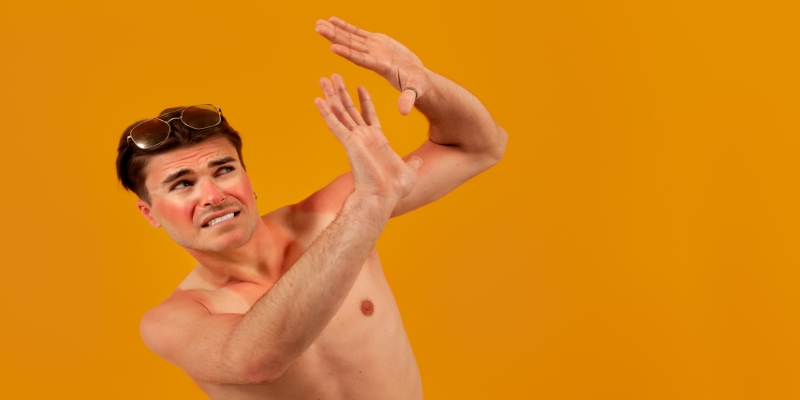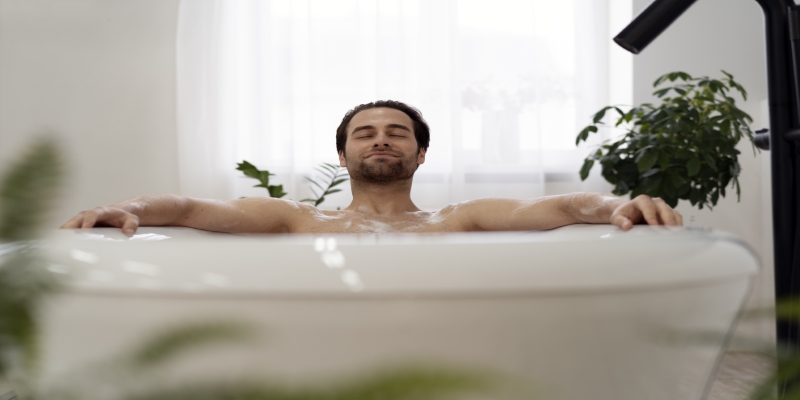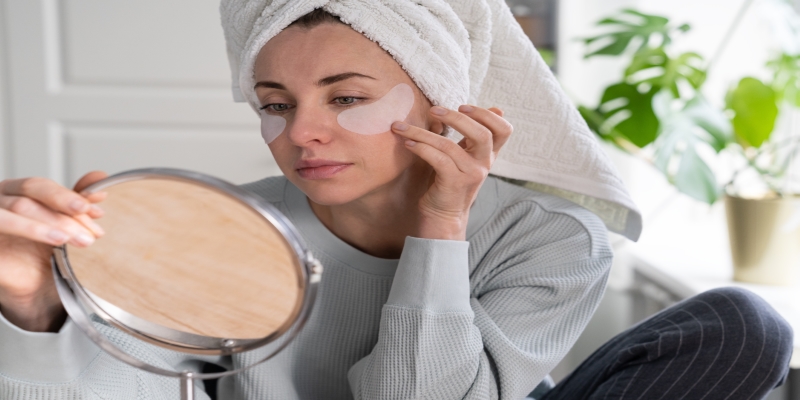Sunburn is an unfortunate but common consequence of spending too much time in the sun without adequate protection. While the initial pain and redness can be distressing, the aftermath of peeling skin can be equally bothersome. Peeling occurs as the body sheds damaged skin cells, but it can be unsightly and uncomfortable.

Fortunately, there are several simple ways to treat peeling sunburn at home. This article will guide you through effective methods to soothe your skin and promote healing.
Understanding Sunburn and Peeling
Before diving into the remedies, its essential to understand why your skin peels after a sunburn. When UV rays from the sun damage your skin cells, the body responds by shedding the damaged outer layer, resulting in peeling. This process is part of the bodys natural healing mechanism, but it can be uncomfortable and unsightly.
6 Simple Ways to Treat Peeling Sunburn at Home
Taking immediate action can help ease discomfort and speed up the healing process.
Hydrate Your Skin
One of the most important steps in treating peeling sunburn is to keep your skin hydrated. A sunburn draws moisture out of the skin, leading to dryness and peeling. To counter this, drink plenty of water to rehydrate from the inside out. Additionally, use a moisturizer that contains aloe vera or hyaluronic acid. Aloe vera has natural anti-inflammatory properties and helps to soothe and moisturize the skin, while hyaluronic acid retains moisture, keeping the skin plump and hydrated.
Applying aloe vera gel directly from the plant can also be highly effective. Simply cut a leaf, extract the gel, and apply it to the affected areas. This not only provides instant relief but also aids in the healing process.
Take Cool Baths or Showers
Cool baths or showers can provide immediate relief from the burning sensation of sunburn. Avoid using hot water, as it can further irritate the skin. Adding ingredients like oatmeal or baking soda to your bath can help soothe the skin.

Oatmeal has anti-inflammatory properties that can reduce redness and itching, while baking soda can relieve itching and calm the skin.After bathing, gently pat your skin dry with a soft towel, leaving a bit of moisture on the skin. This helps in locking in moisture when you apply a moisturizer afterward.
Use Gentle Exfoliation
While it's crucial to be gentle, mild exfoliation can help remove dead skin cells and promote new skin growth. Use a soft washcloth or an exfoliating scrub designed for sensitive skin. Avoid using harsh scrubs or exfoliants that can cause further irritation.
Exfoliating once the sunburn is no longer painful can help minimize peeling and improve the texture of your skin. Be sure to moisturize immediately after exfoliating to soothe and hydrate the new skin.
Avoid Picking or Peeling the Skin
It can be tempting to peel away the flaky skin, but this can lead to more damage and increase the risk of infection. Let the skin shed naturally. Picking at the skin can also prolong the healing process and potentially cause scarring.
If the peeling skin is particularly bothersome, trim loose skin with sterilized scissors, being careful not to pull or tear the skin. Keeping the area moisturized will also reduce the urge to pick at the peeling skin.
Apply Hydrocortisone Cream
Over-the-counter hydrocortisone cream can help reduce inflammation and itching associated with sunburn. Apply a thin layer to the affected areas once or twice a day. Hydrocortisone cream can provide quick relief and aid in the healing process, especially during the initial stages of sunburn.
However, avoid using hydrocortisone cream on broken skin or blisters. If your sunburn is severe, consult a healthcare professional before using any medicated creams.
Protect Your Skin from Further Damage
While your skin is healing, it is more susceptible to further damage. Protect your skin from the sun by staying indoors or wearing protective clothing. If you need to go outside, use a broad-spectrum sunscreen with an SPF of at least 30, even on cloudy days.

Reapply sunscreen every two hours and after swimming or sweating. Wearing a wide-brimmed hat and sunglasses can also provide additional protection. Preventing further sunburn is crucial for allowing your skin to heal properly.
How Long Does Sunburn Take to Heal?
The healing time for sunburn varies based on its severity and the care you provide to your skin. Here is a general overview of the healing process for different types of sunburn:
Mild Sunburn
Mild sunburn typically causes redness, slight pain, and minor discomfort. Healing usually occurs within 3 to 5 days, during which time the skin may peel slightly as it regenerates.
Moderate Sunburn
Moderate sunburn is characterized by more intense redness, increased pain, swelling, and noticeable peeling. This type of sunburn generally takes about 5 to 7 days to heal. The skin will peel more significantly, revealing tender new skin underneath.
Severe Sunburn
Severe sunburn involves intense redness, severe pain, blistering, and significant swelling. Healing can take up to two weeks or more. Blisters may form, and extensive peeling will occur as the skin recovers. Severe sunburns may require medical attention to prevent infection and ensure proper healing.
General Care Tips to Speed Up Healing
Staying hydrated is crucial; drinking plenty of water helps your body heal from the inside out. Keeping your skin moisturized with aloe vera gel or a gentle moisturizer will soothe the burn and maintain hydration. Taking cool baths or showers can help reduce the heat in your skin and alleviate pain. Avoiding sun exposure is essential to prevent further damage to the sunburned skin. Letting the skin peel naturally is important to avoid infections or scarring.
Conclusion
Dealing with peeling sunburn can be uncomfortable and frustrating, but with these simple home remedies, you can soothe your skin and speed up the healing process. Hydration, gentle care, and protection are key to treating sunburn effectively.
Remember to stay hydrated, use cool baths, apply moisturizers, and protect your skin from further sun exposure. By following these steps, you'll help your skin recover more quickly and reduce the discomfort of peeling.

What You Need To Know About The 5k Training Plan
Nov 14, 2023

Leading Collagen Supplements for Hair Volume: Our Top 6 Choices
Jul 24, 2024

An Overview of the Mayo Clinic Diet and Its Benefits and Drawbacks
Dec 14, 2023

What You Should Be Aware Of About Focal Hyperhidrosis
Nov 23, 2023

Surprising Truths About Obsessive Compulsive Disorder
Feb 07, 2024

Is Your Skin Peeling Around Piercing? Find Out The Reasons!
Mar 12, 2024

Unhealthy Foods For Fatigue
Feb 04, 2024

What You Really Should Know About The Different Types Of Arthritis
Nov 05, 2023

Top Skincare Ingredients Known to Increase Sun Sensitivity
Mar 12, 2024

Here Are 5 Foods to Eat If You Have the COVID-19 Virus
Dec 25, 2023

Top Hair Masks to Tame Frizzy Hair: Your Guide to Smoother, Shinier Locks
Jul 24, 2024

Exploring the Benefits of Skin Fasting for a Clearer Complexion
Mar 12, 2024